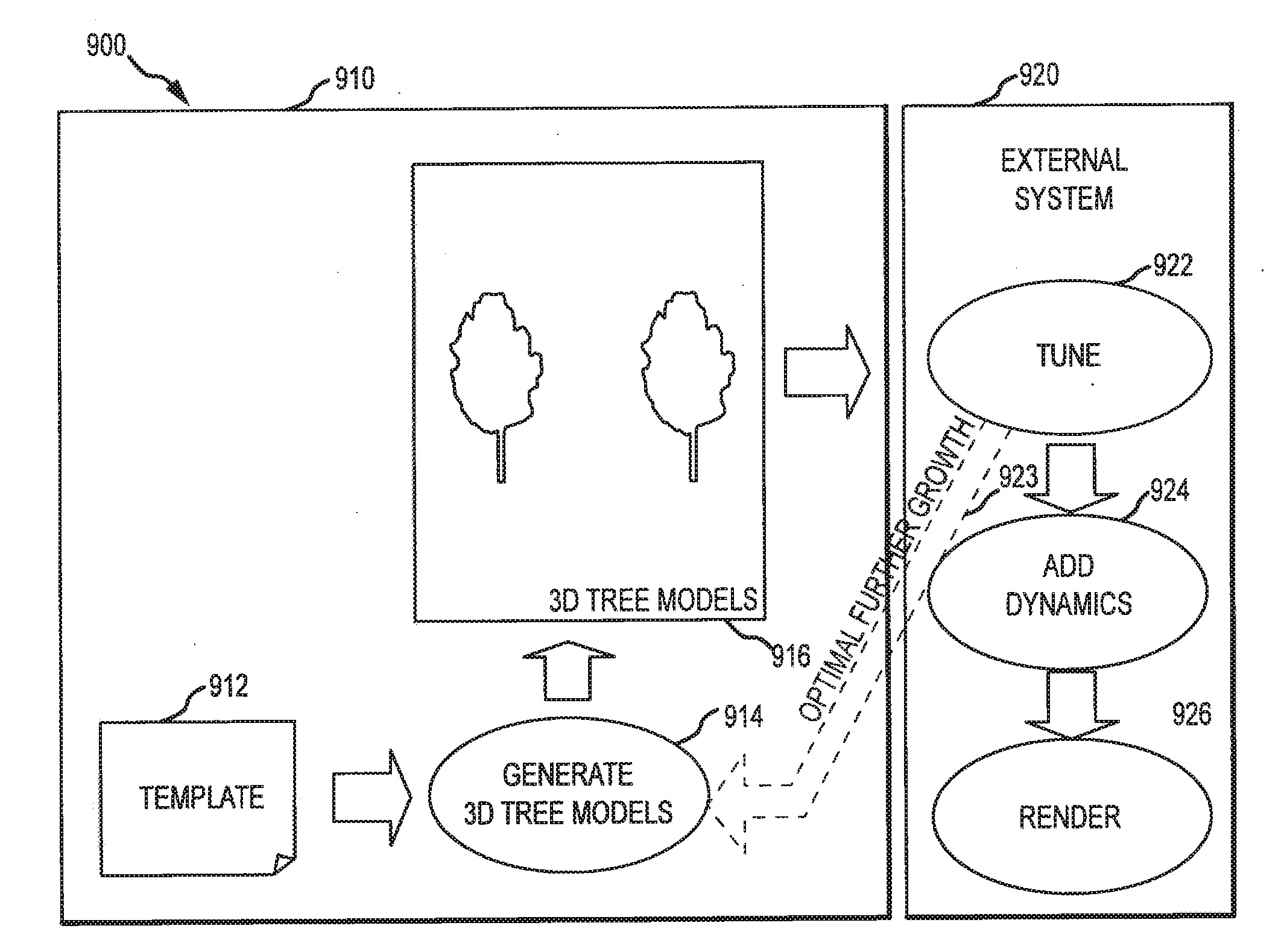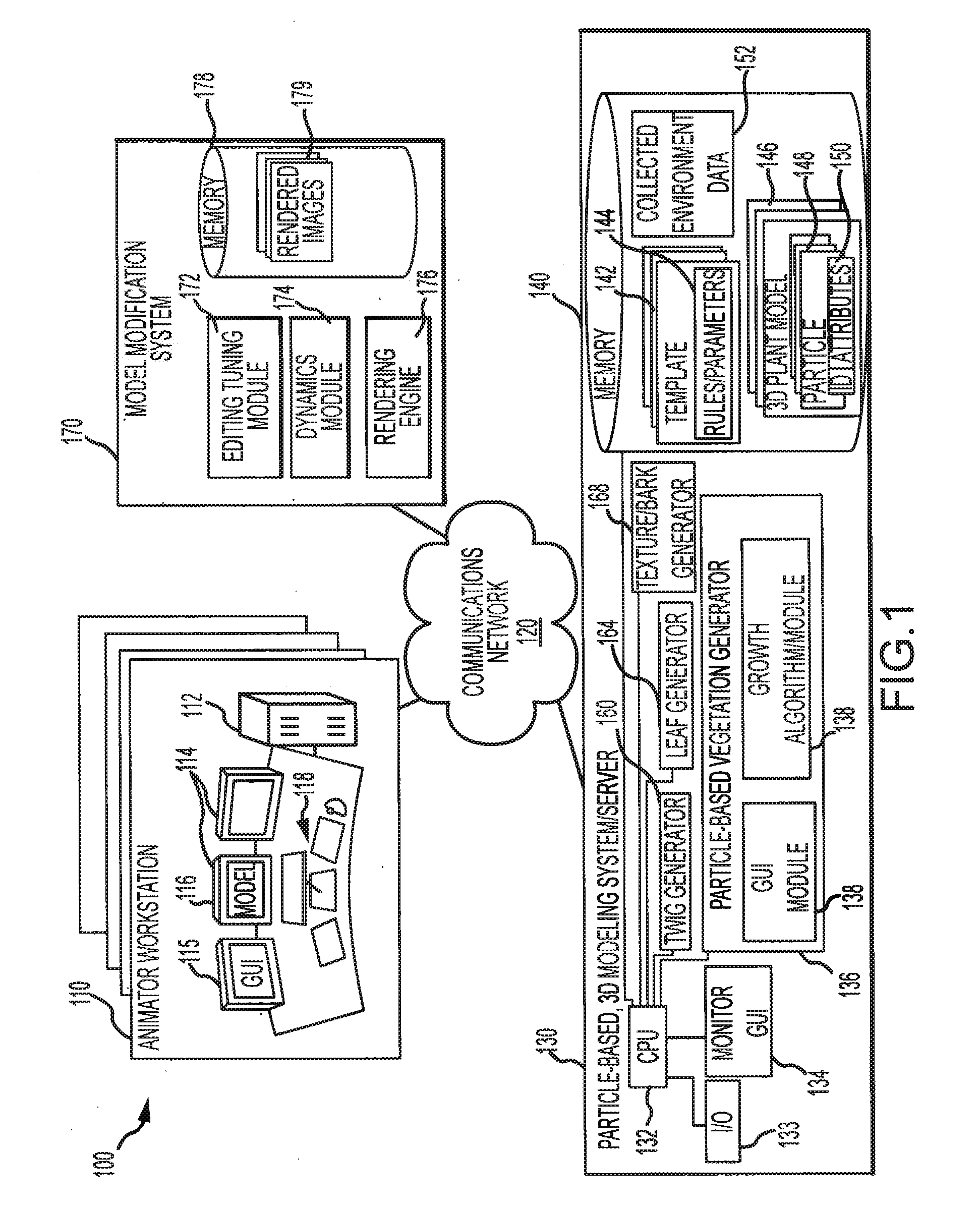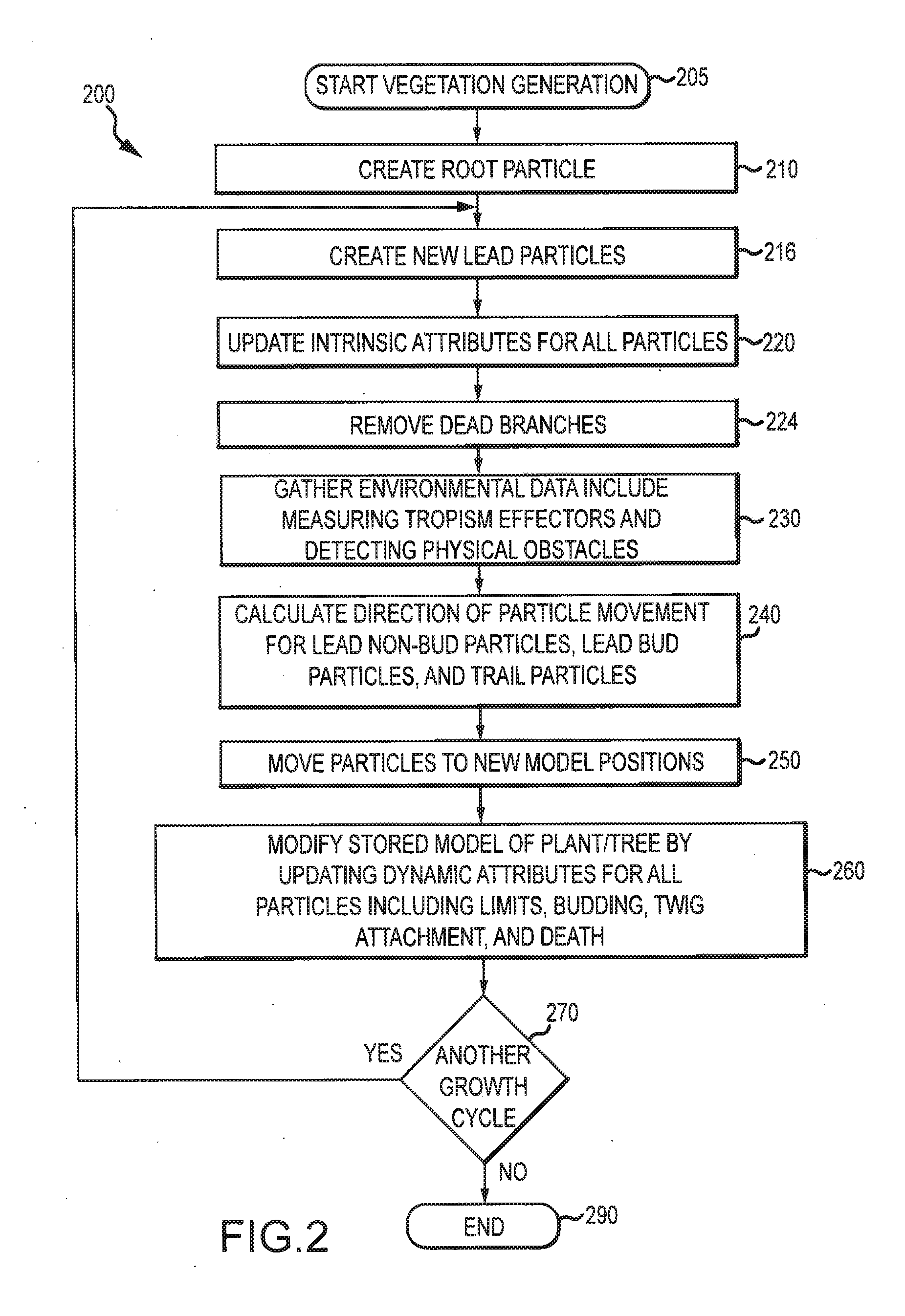Particle-based method of generating and animating three-dimensional vegetation
a particle-based, vegetation technology, applied in the direction of 3d-image rendering, instruments, computing, etc., can solve the problems of complex and organic forms of plants or trees produced, and achieve the effect of reducing interaction or crowding of particles
- Summary
- Abstract
- Description
- Claims
- Application Information
AI Technical Summary
Benefits of technology
Problems solved by technology
Method used
Image
Examples
Embodiment Construction
[0022]Briefly, embodiments of the present invention are directed to methods and systems for generating vegetation (or other models for use in animation) using a particle-based growth process (e.g., a growth algorithm). The following description uses the growth of a tree as a representative, but not limiting, example of the underlying features and functions of the invention, but it will be understood that the invention is equally applicable to other vegetation or foliage and also to other 3D modeling that includes a rigid skeleton or the like that can be grown using a particle system. The vegetation generating method grows trees using a particle system with a “particle” or node being a point in space that possesses a number of attributes or qualities. The attributes are used by the method (or a processor implementing such a method or algorithm) to process a set of growth rules (e.g., rules provided by a template that may have default and / or user-selected rules). The rules are evaluat...
PUM
 Login to View More
Login to View More Abstract
Description
Claims
Application Information
 Login to View More
Login to View More - R&D
- Intellectual Property
- Life Sciences
- Materials
- Tech Scout
- Unparalleled Data Quality
- Higher Quality Content
- 60% Fewer Hallucinations
Browse by: Latest US Patents, China's latest patents, Technical Efficacy Thesaurus, Application Domain, Technology Topic, Popular Technical Reports.
© 2025 PatSnap. All rights reserved.Legal|Privacy policy|Modern Slavery Act Transparency Statement|Sitemap|About US| Contact US: help@patsnap.com



